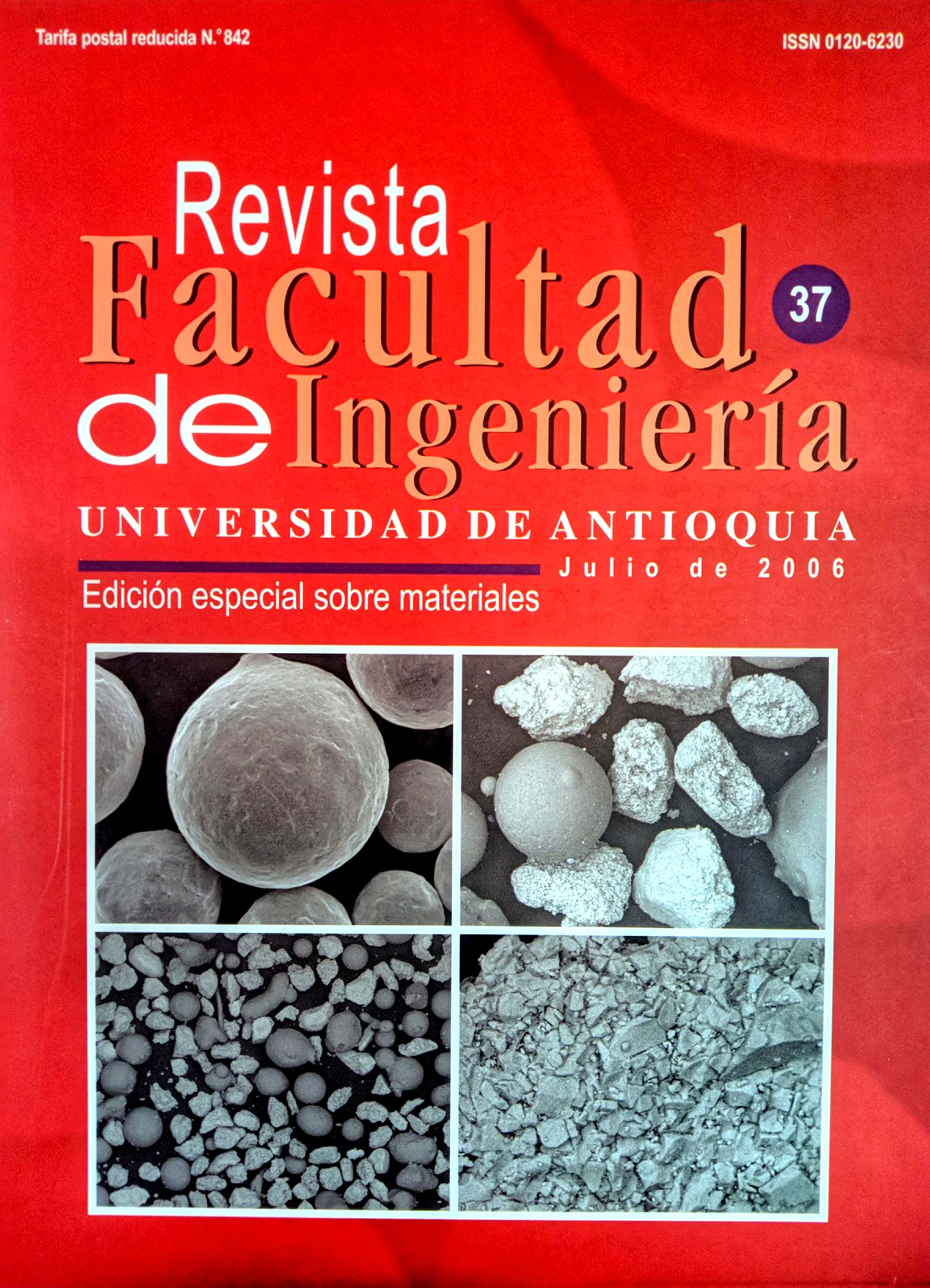Corrosion evaluation of oxygen-brine-steel 1020 system by impingement cell
DOI:
https://doi.org/10.17533/udea.redin.343457Keywords:
Mass transfer, shear stress on the wall, impingement cell, electrochemical limit currentAbstract
Corrosion is affected in different ways by the flowing fluids depending on solution- metal interface. To study these phenomena, there are some equipments in laboratory which allow to simulate field conditions by using correlations that can predict mass transfer and shear stress coefficients. However, these correlations have not been validated for all systems and there are no expressions to describe corrosion rates as a function of such parameters. The limit current technique was used to determine the mass transfer and shear stress on the wall, which were compared to those predicted by correlations for an impingement cell; besides, the corrosion rates for different experimental conditions were evaluated. The corrosion mechanism was found to be controlled partially by charge and mass transfer, so not all correlations fitted experimental data. Finally, from the main electrochemical variables, a mathematical correlation of corrosion rate, hydrodynamic variables and mass transfer was obtained.
Downloads
References
D. Macdonald. En: MTI Publications (eds). The Development of Controlled Hydrodynamic Techniques for Corrosion Testing. Houston. N.° T-3. 1986, pp. 150-180.
D. Silverman. An approach for predicting velocity sensitive corrosion. Corrosion 90. Paper N.o 13.
E. Heitz, Chemo-Mechanical effects of flow on corrosion. Corrosion. Vol. 47. 1991. pp. 135-145. DOI: https://doi.org/10.5006/1.3585229
F. Giralt, O. Trass. Mass Transfer from Crystalline Surfaces in a Turbulent Impinging Jet Part I. Transfer by Erosion. The Canadian Journal of Chemical Engineering. Vol. 53. 1975. pp. 505-511. DOI: https://doi.org/10.1002/cjce.5450530508
F. Giralt, O. Trass. Mass Transfer from Crystalline Surfaces in a Turbulent Impinging Jet Part 2: Erosion and diffusional Transfer. The Canadian Journal of Chemical Engineering. Vol. 54. N.º 6. 1976. pp 148-155. DOI: https://doi.org/10.1002/cjce.5450540305
J. Esteban, G. Hickey, M. Orazem. The Impinging Jet electrode: Measurement of the Hydrodynamic Constant and Its Use for Evaluating Film Persistency. Corrosion. Vol. 46 1990. pp. 896-901. DOI: https://doi.org/10.5006/1.3580855
J. Postlethwaite. Direct Measurement of the Corrosion Current for Oxygen-Reduction Corrosion, Electrochemical Corrosion Testing”. ASTM STP 727. 1981. DOI: https://doi.org/10.1520/STP28040S
K. Efird, E. J. Wright, J. A. Boros, T.G. Hailey. Correlation of steel corrosion in pipe flow with jet impingement and rotating cylinder tests. Corrosion. Vol. 49. 1993. pp. 992-1003. DOI: https://doi.org/10.5006/1.3316026
K. Efird. Jet impingement testing for flow accelerated corrosion. Corrosion 2000. Paper N.o 52.
L. Jiang, M. Gopal. Calculation of mass transfer in multiphase flow. Corrosion 98, Paper N.o 50.
M. Langsholt, M. Nordsveen, K. Lunde. Wall shear stress and mass transfer rates - important parameters in CO2 corrosion. BHR Group 1997 Multiphase’97. 1997. pp. 537-552.
Downloads
Published
How to Cite
Issue
Section
License
Revista Facultad de Ingeniería, Universidad de Antioquia is licensed under the Creative Commons Attribution BY-NC-SA 4.0 license. https://creativecommons.org/licenses/by-nc-sa/4.0/deed.en
You are free to:
Share — copy and redistribute the material in any medium or format
Adapt — remix, transform, and build upon the material
Under the following terms:
Attribution — You must give appropriate credit, provide a link to the license, and indicate if changes were made. You may do so in any reasonable manner, but not in any way that suggests the licensor endorses you or your use.
NonCommercial — You may not use the material for commercial purposes.
ShareAlike — If you remix, transform, or build upon the material, you must distribute your contributions under the same license as the original.
The material published in the journal can be distributed, copied and exhibited by third parties if the respective credits are given to the journal. No commercial benefit can be obtained and derivative works must be under the same license terms as the original work.










 Twitter
Twitter